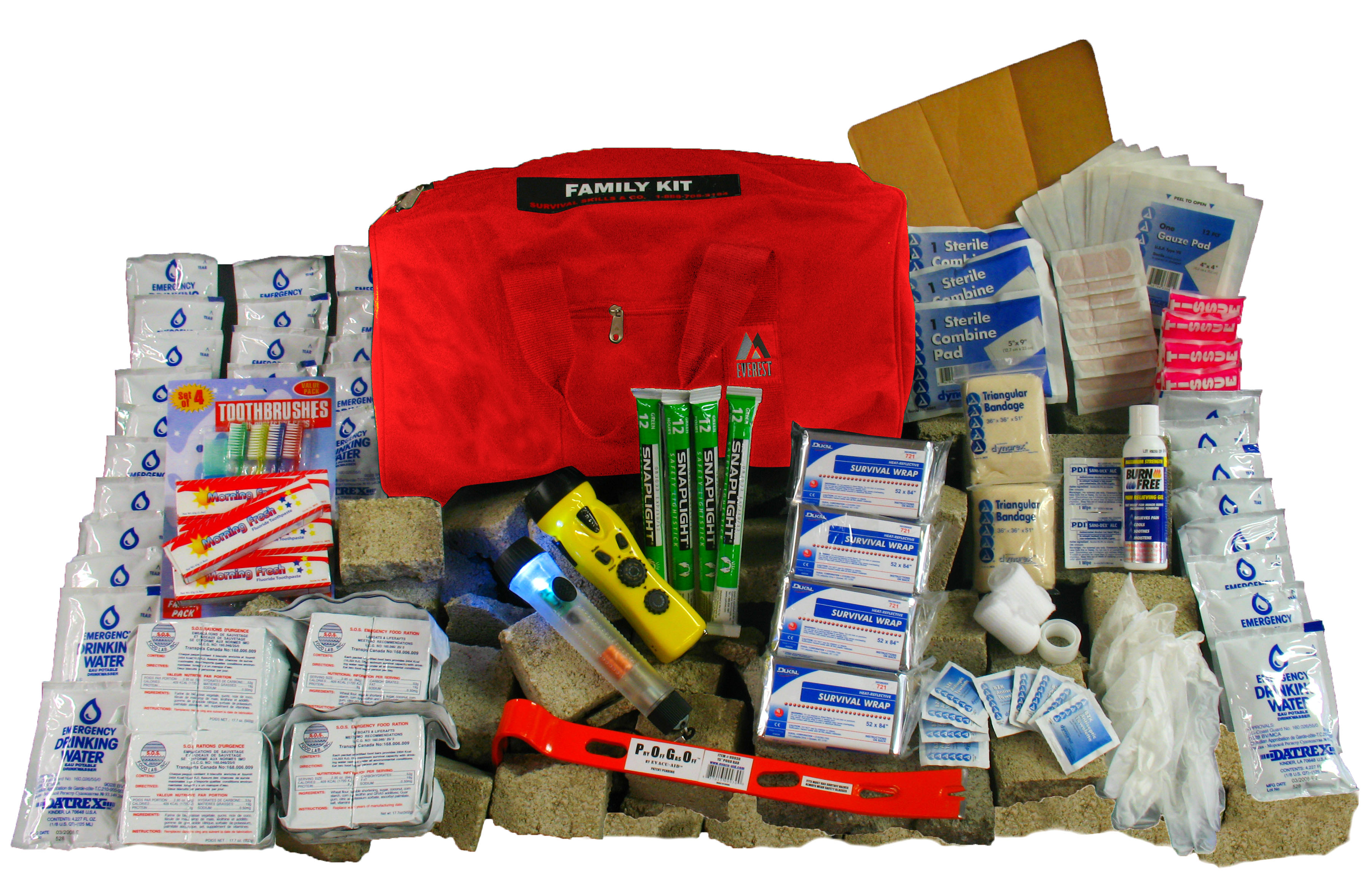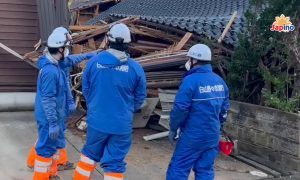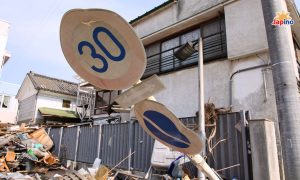Earthquakes or Jishin
Japan has experienced a large number of earthquake hazards compared with world standards. Earthquakes are thought to be caused by movement of geological plates against each other, and four such plates converge under Japan. Also, tsunamis accompanying a large scale earthquakes can also occur suddenly.
Everyday measures to get ready for an earthquake.
- Where to check for the nearest evacuation area or shelter. In preparation for major earthquakes, each districts has a designated evacuation area or shelter. If an earthquake occurs when you are at your workplace, you may have to walk all the way to get home (since transportation system and related infrastructures may become affected). It is important to plan a walking route in advance to return home in emergency situations. Please inquire at your local government office to confirm the nearest emergency shelter.
- How to check the safety of your housing. It is possible to use metal fittings to secure your furniture, which will help prevent them from falling over in case an earthquake should occur. Where glass is used as windows, shelves and cupboards, it is advisable to use shatter-prevention film. Also, it is important to make sure flowerpots and other objects on a balcony do not fall down.
- How to prepare your emergency survival kit. Make sure to pack an emergency survival kit in a backpack or bag and keep it in a place where all family members can easily find it.
Make sure to include these items in your pack:
- Copies of passport, bankbooks, inkan and money (including some coins for using public telephones)
- Rope, blankets, socks and underwear
- Pen, portable radio receiver, torch light, batteries, knife, can opener, lighter, matches, and candles
- Drinking water and nonperishable food
- Trick cotton gloves, helmet, or other protective head gear and first aid kit
- it is important to store enough drinking water (approximately 2-3 liters per person per day)
- make notes of emergency contact telephone numbers for family members, and address and other contact details of people who can communicate in your language)
What to do when an earthquake occurs?
- If you are at home or office (building)
- Ensure your personal safety by sheltering under a durable desk or table. If there is no place to hide, protect yourself with a cushion or your own hands from falling objects.
- Switch off all heating sources immediately such as gas cookers, etc. which may cause fire. If a fire breaks out, it will need to be extinguished immediately with the nearest fire extinguisher.
- Open all doors and windows to secure a way to evacuate. Doors can be damaged and stuck in the event of an earthquake. Do not forget to wear shoes even inside the house to avoid injuries (such as stepping on broken glass).
- Do not get panicked and try to watch to the news on TV and to listen to radio or telephone for earthquake information. Also, do not forget that small tremors may occur following the main quake.
- Get ready to evacuate but avoid rushing out. Make sure not to forget your emergency survival kit. If you are in a building avoid using the elevators and use the stairs instead to evacuate.
- You should not evacuate on foot. Never use cars, motorcycles or bicycles. Try not to become separated from family members. Make your way as quickly as possible to the evacuation areas or shelters.
- If you are driving a car
- Avoid braking suddenly and slow down by moving the car to the left shoulder of the road. Turn off the engine.
- Wait inside the car and listen to the radio for information about the earthquake.
- Follow the instructions given by the police. To evacuate on foot, leave the key in the ignition and the doors unlocked
- If you are in a city center.
- To protect falling objects such as broken windows or signboards, protect your head with your bag or a similar object.
- After the quake ceases, go to an open area or look for an evacuation area.
- If you are inside an elevator.
- If the elevator has an earthquake sensor, it will stop automatically at the nearest floor. But if now, you should push every floor button to make the elevator stop and get off the elevator.
- If the elevator door does not open, use the emergency phone or button to inform someone outside that you are trapped inside. Do not try to force the door to open from inside until the rescue service arrives.
- If you are inside a train.
- If you are standing, grab a strap or handrail with both hands to prevent from falling.
- After the train stops and the quake ceases, you should stay calm and wait for instructions from the conductor or crew. Do not try to unlock the door and leave the train without directions.
After an earthquake.
Stay calm and try to collect accurate information from the television, radio, etc. Following the main quake, there is the danger of aftershocks (yoshin) and, in some places, tidal waves (tsunamis) the most common secondary disaster after an earthquake is fire. So, before evacuating, turn off the main gas tap and the circuit breaker.
The Japan Meteorological Agency issues an earthquake early warning (kinkyu jishin sokuho) immediately after the occurrence of earthquakes, with a seismic intensity of 5 lower or over.
*For more information, please check the Japan Meteorological Agency website: www.jma.go.jp/jma/indexe.html
Magnitude and seismic intensity
Magnitude represents the size of an earthquake. For example, the Great Kanto earthquake of September 1923 was recorded at M7.9. Seismic intensity is a measure to represent the scale of tremor at a location caused by an earthquake.
Typhoons
The typhoon season is usually from July to October, with Japan’s southern islands Okinawa and Kyushu, bearing the effects of typhoons on their northern advance. As the temperature rises in the summer heat, sea water will then evaporate causing an updraft, which later turns into a typhoon in the South Pacific, southeast of Japan. When a typhoon hits the land, the weather in most parts of the country would be affected by its power, strong wind, and rainstorms. Some of these typhoons can cause serious damage.
How to prepare for typhoons?
- All glass windows should be reinforced with duct tape or vinyl tape.
- Objects like flowerpots in the garden or balcony should be taken inside the house.
- Prepare a flashlight and portable radio to use in case of a blackout. Also make sure to keep extra batteries.
- Keep things you need to take with you in case of emergency, inside of a bag and in a convenient place.
- Confirm before hand where the nearest shelter (or evacuations center depending on degree of seriousness) is and also how to get there.
What to do when a typhoon occurs?
- Close all shutters with your residence and do not go outside in strong winds.
- Please check the latest weather forecast. If an evacuation advisory is given, you may evacuate as quickly as possible.
- Keep away from broken electricity poles or sagging cables.
Emergency Message Dial
This service allows people outside the affected area to send messages to people in the affected area, and also allows people in the damaged area to record and send messages to their family and etc. It is a temporary service and it is a type of voice recorded message board.
NTT Saigai dengon dial (Temporary telephone message service in times of disaster) – Tel. 171
Risai Shomei-sho (Disaster Victim Certificate)
To apply for tax deductions for victims of storms and floods, it is necessary to have a Risai Shomei-sho. You may find the application form at your local government office or at the fire department.
Source: Living in Japan, IPC World Inc.

























